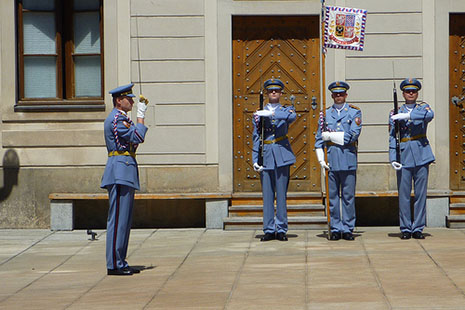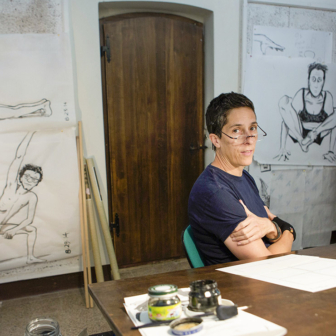Czechoslovakia: The State That Failed
by Mary Heimann | Yale University Press | US$45
CAUGHT UP in several of the flashpoints of the violent and troubled twentieth century was a country whose name few foreigners could spell and even fewer could locate with any certainty on a map – Czechoslovakia. Over the course of a single lifetime Czechs had first-hand experience of military, democratic, fascist and communist rule.
The country was created at Versailles after the Wilsonian remaking of the Old World, and held up as an exemplar of the new self-determination and national liberty. It sat there as a seeming island of central European democracy in the succeeding years while authoritarian government spread over the continent. It was the centrepiece in the great betrayal that was the Munich Pact – its German speaking lands hived off to the Reich – and during the war Nazi Germany tightened its hold over its Czech “protectorate” while giving Slovakia notional independence as a puppet state.
Even after hostilities, Czechoslovakia forced its way into the news, opting for communism rather than succumbing to its imposition – at least at first. Then it all but drifted back into anonymity until that fateful summer in the fateful year of 1968 – the so-called Prague Spring – when tanks rumbled into Prague. The Soviet-led invasion by the Warsaw Pact countries aimed to reverse a communist reform movement that seemed determined to fashion “socialism with a human face.”
The revolt was crushed – and once more tiny, liberal Czechoslovakia was seen by the world to have been stomped under the boots of its bullying neighbour. But the spirit seemed indomitable. As struggles against Soviet domination gathered pace, Czechoslovakia was at the forefront of the burgeoning human rights movement with its bold Charter 77 declaration. In the equally momentous year of 1989 it was home to the Velvet Revolution, throwing off the shackles of communism; a few years later came the much heralded Velvet Separation, as the Czechs parted company with the Slovaks without a shot being fired – to all intents and purposes a salutary lesson to the world about what peaceful, civilised peoples can achieve.
But just how accurate is this picture postcard of what was once Czechoslovakia? The conventional wisdom of this bullied and battered small nation, with no influence at all in foreign affairs, is of a deeply rooted humane, liberal and democratic tradition betrayed by the Nazis at Munich in 1938 and then by its so-called allies in 1968. But this view has been challenged by a remarkable revisionist history by an English academic, Mary Heimann, who became so fascinated with the country that no longer exists that she moved to Prague for two years, learned Czech and plunged into hitherto hidden archives to unveil a story of cruelty, cynicism and opportunism. Above all, she removes the veil from a potent and chauvinistic nationalism, all too often concealed.
Far from seeing Czechoslovakia as the helpless and hapless victims of Nazi aggression in 1938, Heimann turns the blame back on Czech and Slovak chauvinism, which she argues is one of the principal causes of the underlying instability that led to the Munich crisis in 1938. This chauvinism also made the persecution of Jews and Gypsies not only possible but frighteningly energetic, lost the country to Stalinist bigots, and turned Czechoslovakia into one of the most hardline states of the Eastern bloc for all but the brief interlude of the Prague Spring. “Czech and Slovak nationalists, in short, turn out to have been no more immune from the temptation of authoritarianism, bigotry and cruelty than anyone else,” she writes.
A thread of opportunism runs through the former nation’s political history, and Heimann spares no reputations in her wide-ranging investigation, from the revered Czech nationalist and first president of the republic, Tomas Masaryk, to the face of the Prague Spring, Alexander Dubcek, hailed as a hero and martyr in the West. Each, like the second president, Edvard Benes, was first and foremost a politician, wholly capable of sacrificing principle to expediency and betraying an ally for advantage, and motivated by a self-seeking opportunism to be seen always at the head of the procession.
Even the very founding of Czechoslovakia after 1918, when it was held up to the world as a model state, was based on lies, exaggeration and myth in spinning a tale to the peacemakers – who knew little history – about the Czech people’s historical and natural right to the “Czech lands.” Czechoslovakia’s much vaunted democracy of the 1930s was relative: Jews and Gypsies had few civil rights and the German speakers of the Sudetenland were shamefully discriminated against – in fact so much so that their sorry plight provided Hitler with ample justification for annexation.
There were certainly acts of heroic resistance against the Nazis during the war, but there were just as many, if not more, acts of capitulation and collaboration, and in pious Slovakia the ruling elites welcomed the Nazis as liberators, and the Catholic Church even provided one of its own priests, Jozef Tiso, to head the puppet administration set up by the Nazis. Even during the crisis of 1968, key elements of the communist elite saw the invasion not so much as a national calamity but as an opportunity for advancement and the settling of scores.
It has been more than thirty years since I last visited Prague, one of the most beautiful medieval cities of Europe and left largely undamaged by war. Then it was a sombre city, still smouldering with sullen resentment over 1968 and the return to harsh communist orthodoxy. Now, it is a youthful, bustling, energetic city where the once-grey walls of spartan socialism are ablaze with the same international brand names as you will find in New York and Paris. After the initial novelty of the Havel years, its politics is grey and mundane – just like its politicians as they seek a place in the sun for the newly capitalist republic where, alone of all countries, it is illegal to advocate the overthrow of capitalism.
Yet for all that has changed, some fundamentals remain in place. Nationalism rather than communism is the “unreformed, unrepentant force in the region,” concludes Heimann. A peculiarly Habsburg way of conceiving national identity – as tied to language and culture even more than to race or religion – ended twice in the creation, and twice in the destruction, of a state known as Czechoslovakia, and also led to authoritarianism and demagoguery, causing untold suffering. It is a sobering case study of how nationalism, even in a democratic country, can move seamlessly from democracy through fascism to socialism, communism and back again.
But there is a broader, more universal story contained in the story of Czechoslovakia: a stark warning as to how easily a nationalistic outlook, along with the perception of belonging to a victim country, can lead perfectly ordinary, decent people from liberal democracy to the police state. •




